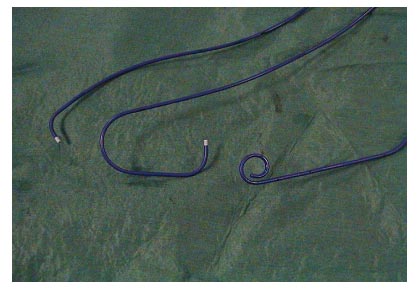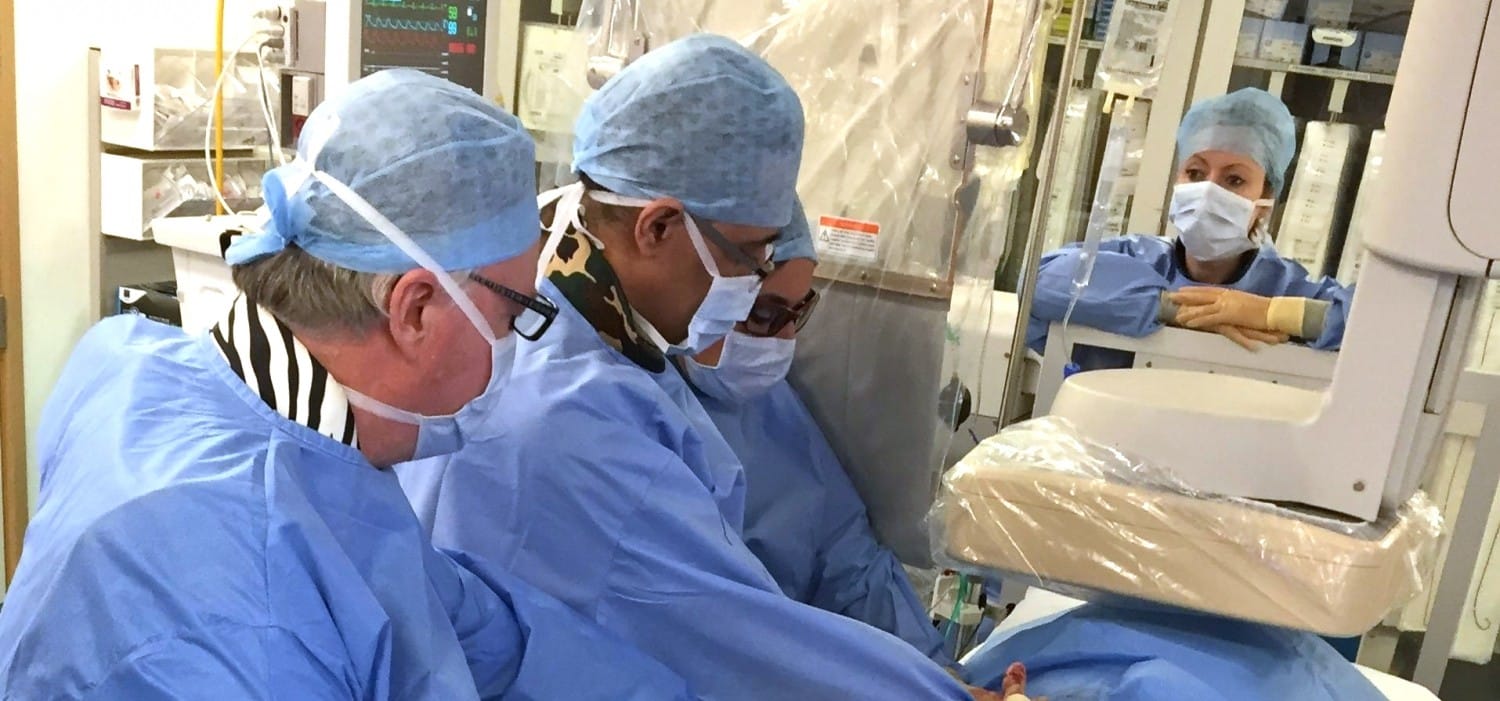Get seen by Dr Iqbal Malik – a leading London specialist in Angiography procedures.
What is a Coronary Angiography?
This investigation, if required, is performed at an alternative provider (not in-house). Dr Malik is an expert in invasive treatments.
A coronary angiography is a test which allows your cardiologist to visualise the coronary arteries. Specially shaped pipes or catheters are use to inject a dye into the arteries which shows up on x-ray. The procedure is normally performed as a day case.

Catheters used for coronary angiography.
Having a Coronary Angiography
This procedure is undertaken in one of out partner facilities. You will need to fast for a least 4 hours for your procedure. You will be admitted to hospital. The nurses will take some details from you, check for any potential issues such as previous allergic reactions, drugs in the past, check the medication you are taking. When you have signed the consent form, you will be taken down to the cardiac catheterisation laboratory.
The procedure can be done from the wrist (the radial artery) or the leg (the femoral artery). In the Catheterisation Laboratory, the doctor will place a local anaesthetic at the puncture site. When the skin is completely frozen and anaesthetised, the doctor will insert a tiny plastic tube into the artery. Through this tiny plastic gateway, he will conduct the procedure.
Specially shaped plastic pipes allow the mouth of the coronary arteries to be engaged. A special radio-opaque dye is injected through the tube and x-ray pictures are taken. This allows the doctor and his team to see any narrowing’s or blockages. The whole procedure takes about 15 minutes.
As it is an invasive test, there is a small risk of complications. These include bruising and bleeding from the artery puncture point, or internal bleeding, but very rarely can include setting off a heart attack or stroke. Death from a coronary angiography is very rare.
Watch as Dr Malik discusses treatment options with a panel of Doctors after an Angiogram was carried out.
What happens after a Coronary Angiography
When the cardiologist has gathered all the data that is required, the tube will be removed from the arm or leg. If done via the leg, more often than not, a special sealing device will often be placed at the top of the leg, in the form of a tiny plug, which seals off the puncture site of the artery and prevents any further bleeding. You will be able to sit up and have a drink almost immediately and mobilise within 2 hours. Thereafter, someone may escort you home later that day. If done from the wrist, you can sit up immediately, with a wrist band compressing the puncture site.
We can discuss the results with you immediately.
Ready to book your consultation?
Either give us a call, e-mail or fill out our simple contact form to arrange your consultation with London’s top cardiologist specialists.


